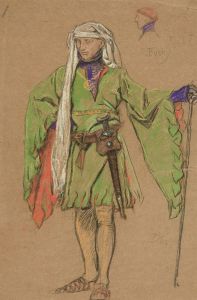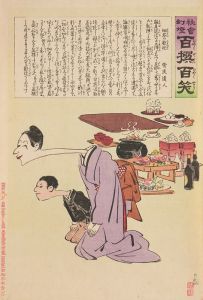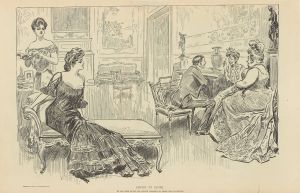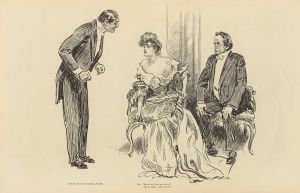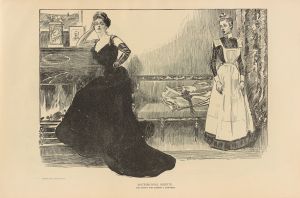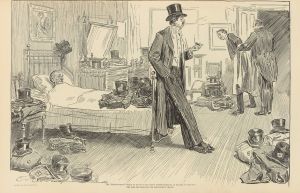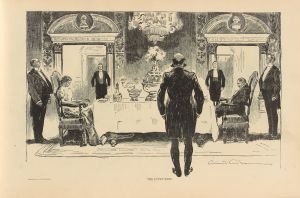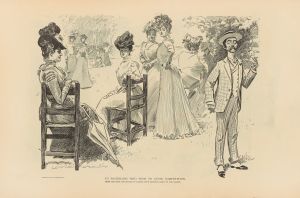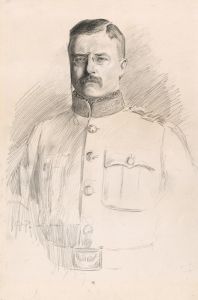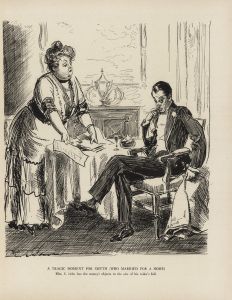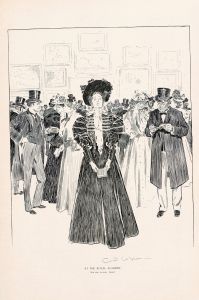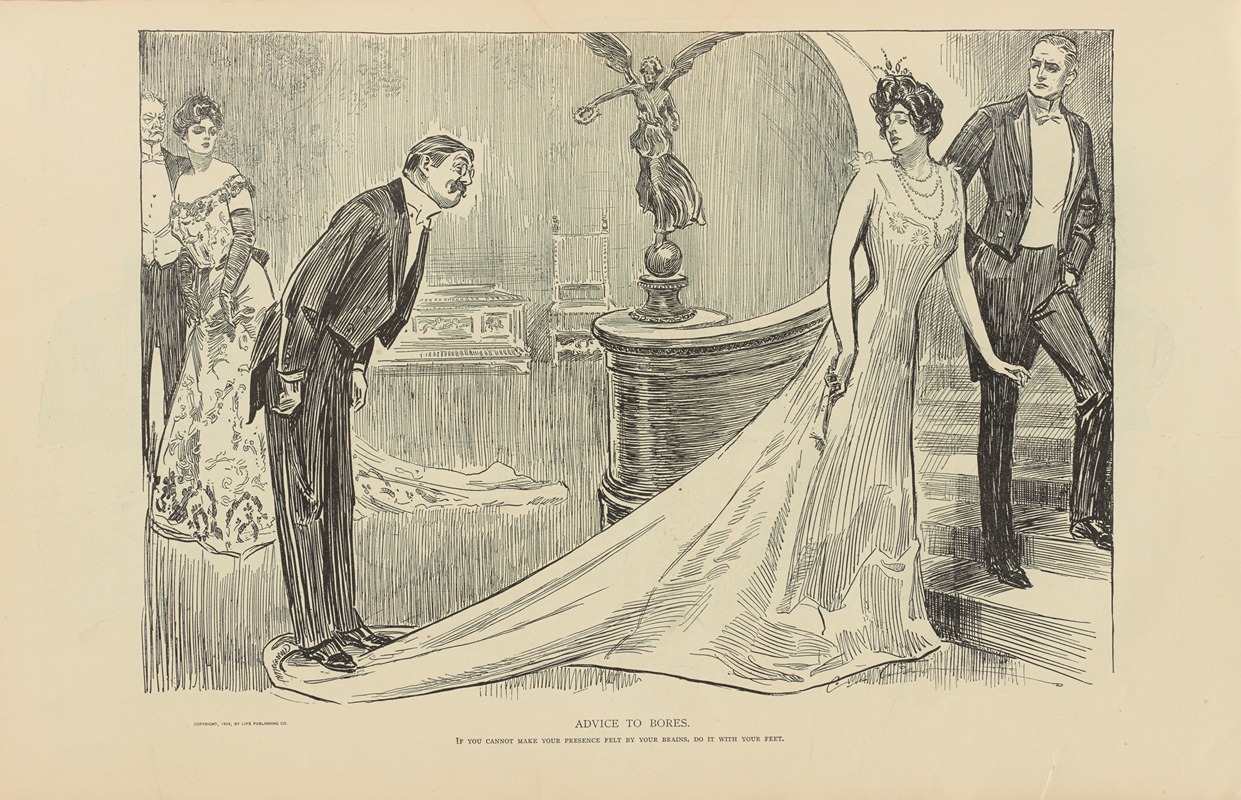
Advice to bores
A hand-painted replica of Charles Dana Gibson’s masterpiece Advice to bores, meticulously crafted by professional artists to capture the true essence of the original. Each piece is created with museum-quality canvas and rare mineral pigments, carefully painted by experienced artists with delicate brushstrokes and rich, layered colors to perfectly recreate the texture of the original artwork. Unlike machine-printed reproductions, this hand-painted version brings the painting to life, infused with the artist’s emotions and skill in every stroke. Whether for personal collection or home decoration, it instantly elevates the artistic atmosphere of any space.
"Advice to Bores" is an illustration by Charles Dana Gibson, an influential American graphic artist best known for his creation of the "Gibson Girl," a representation of the idealized American woman at the turn of the 20th century. Gibson's work was widely published in magazines and became iconic in shaping the visual culture of the era.
Charles Dana Gibson was born on September 14, 1867, in Roxbury, Massachusetts. He studied at the Art Students League in New York City, where he honed his skills in illustration. Gibson's career took off in the 1890s when his drawings began appearing in popular publications such as Life, Harper's Weekly, and Scribner's. His illustrations captured the social dynamics and fashions of the time, often with a humorous or satirical edge.
"Advice to Bores" is one of Gibson's many illustrations that reflect his keen observation of social interactions. While specific details about the creation and publication of "Advice to Bores" are not extensively documented, it is consistent with Gibson's style of using humor and wit to comment on societal norms and behaviors. The illustration likely depicts a social scene with characters engaged in conversation, highlighting the nuances of social etiquette and the often humorous nature of human interactions.
Gibson's work, including "Advice to Bores," is characterized by its detailed line work and expressive characters. His ability to capture the subtleties of expression and posture made his illustrations relatable and engaging to a wide audience. The "Gibson Girl," in particular, became a cultural icon, representing a new, independent woman who was both fashionable and assertive. This character appeared in many of Gibson's works, though it is unclear if she is featured in "Advice to Bores."
The impact of Gibson's illustrations extended beyond their immediate popularity. They influenced fashion, with women emulating the style of the "Gibson Girl," and they contributed to the visual language of the early 20th century. Gibson's work also paved the way for future illustrators and cartoonists, establishing a standard for combining art with social commentary.
In summary, "Advice to Bores" is a testament to Charles Dana Gibson's talent as an illustrator and his ability to capture the essence of his time. While specific details about this particular illustration are limited, it remains a part of Gibson's broader legacy, which continues to be appreciated for its artistic merit and cultural significance.





